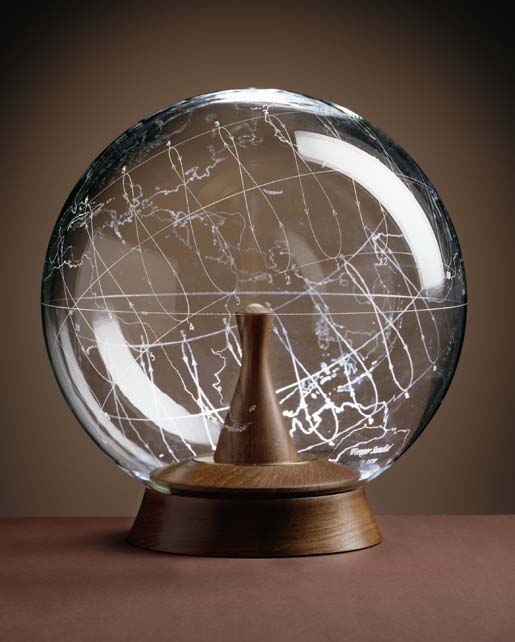The Wenger Sundial
The Wenger Sundial is without precedent. The design makes use of a clear glass globe to represent the Earth. On the globe are scribed the outline of the continents and larger islands of the world. The sundial is made for a particular location on the Earth such that the user's location is at the very top of the globe. The sundial is oriented with the north pole of the globe pointing to the actual north pole.
The user places a pointer (or a finger) on the globe and moves the pointer until the shadow of the tip of the pointer falls upon the mark at the center of the globe. The user is then pointing to that spot on the earth where the sun is directly overhead at that moment. The nearby time lines (analemmas) are used to read the time of day (clock time). Time lines are numbered for standard time and daylight saving time as needed.
The Wenger Sundial provides much more information than the current time of day. Since the local Horizon, the Equator, the Tropic of Cancer and the Tropic of Capricorn are also scribed on the globe, the location of the sun with respect to the Equator is easily read. This indicates the degree of summer or winter. The Tropic lines indicate the path of the sun on the Summer and Winter Solstices (approximately June 21 and December 21). The Equator indicates the path of the sun on the Equinox (approximately March 21 and September 21). By following the current position of the sun parallel to these lines until the local Horizon is met, the user may then read the time of sunrise and sunset and the direction of the sun at those times.
The Wenger Sundial has US patent number D249473.
